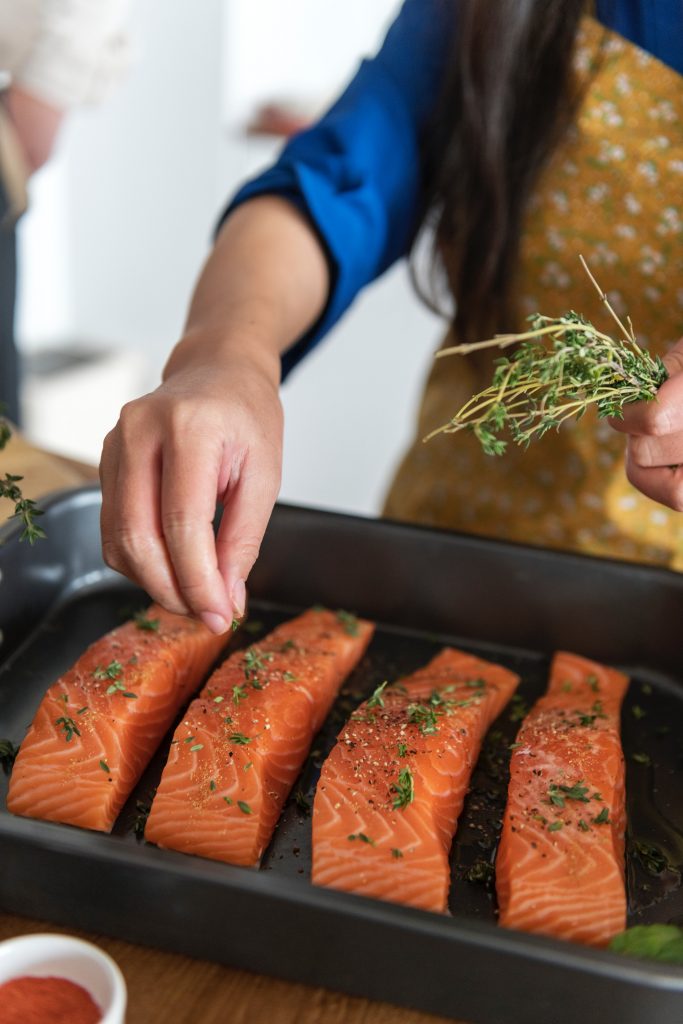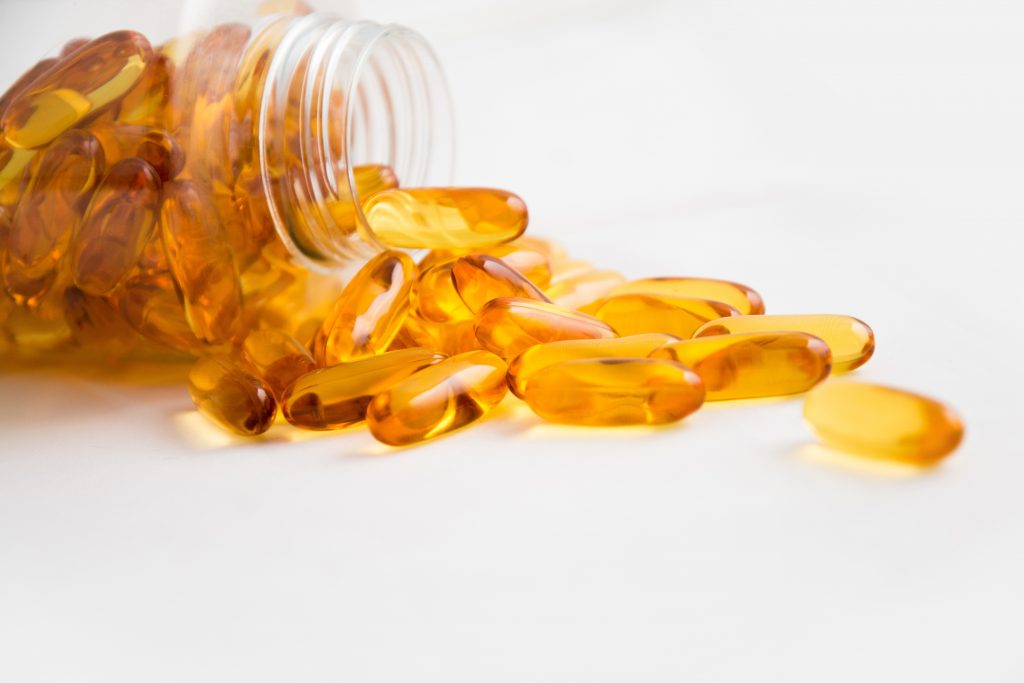What You Don't Know About Omega-3 Fats
If you really understood how critical omega-3 fatty acids are to keeping your brain sharp, heart healthy, and mental health intact, you would ensure you and your family ate more of them! Omega-3 fats have an important role in reducing inflammation, blood clots, and blood pressure and are critical for learning, vision, and brain function, especially for the brain development of babies and children.
Even childhood food allergies and postpartum depression are linked to a low intake of omega-3 fatty acids! We usually talk about omega-3s in conjunction with seafood, but I have some non-fish suggestions to help you get more of this incredible fatty acid in your diet. Furthermore, so you don’t get confused by tricky labels, I will clue you in on the omega-3 label language and the different kinds of omega-3s.

Active and Inactive Omega-3 Fats
Not all the omega-3 fats in food have equal power in the body! There are three types of omega-3 fats: DHA, EPA, and ALA. The DHA and EPA types are found in marine sources like fish, seaweed, and algae. These are active omega-3 fats and have the most significant impact on your health since they are already in the form used by the body. That is why the American Heart Association, the Dietary Guidelines for Americans, and others recommend that everyone (especially pregnant, nursing moms, and children up to 18 years of age) eat seafood at least twice a week (8-12oz). These active omega-3 fatty acids are found in particularly high concentration in salmon, trout, sablefish, mackerel, tuna, herring, sardines, and oysters, but eating seafood in general is a good start. ALA omega-3s are found in plants, like flaxseed, chia seeds, walnuts, edamame, and canola oil. These are still good, but are inactive, and have to be converted by the body to become the active DHA or EPA. Your body only converts about 5% of the ALA omega-3s into the active form, which isn't as efficient. This means that eating fish and seafood is the easiest and most effective way to get the active DHA and EPA omega-3s. Because omega-3 fats cannot be made in the body, they must come from food! In fact, half of the fat in a person's brain is made up of DHA omega-3s.
Labels
So how do you know which foods have the active omega-3s you're looking for? Whenever a product claims to have added omega-3s, ask, “is it the active form of DHA and EPA? Or is it the inactive ALA?" Look on the label and see if there is any indication of what type of omega-3s have been added. If the type isn't specified, base your evaluation on whether the ingredients come from plants, or if they come from a marine source, like algae, seaweed, or fish.
Flaxseed, for example, offers a concentrated source of inactive ALAs and is used frequently to boost omega-3 levels in products. This inactive form of omega-3 fatty acids is still great to eat (especially if you aren't getting seafood 2 -3 times per week) but be aware that ALA isn't the same as DHA and EPA in its effectiveness to your health. Hands down, the best way to eat active omegas is through seafood, barnyard eggs, and seaweed. But eating ALA omega-3 fatty acids from walnuts, flaxseed, chia, edamame, and other plants certainly helps! This is more of a "good, better, best" situation.
Seaweed
For those of you who don't eat fish but still want active omega-3s in your diet, there are some non-seafood options for you. Seaweed, also known as sea vegetables, is technically not a plant, but a small group of algae that grow in the sea. This alga contains some healthy DHA omega-3 fats that are eaten by marine life. Seaweed and microalgae are the only non-seafood sources of DHA but have a very low concentration given their extremely low total fat content (this excludes supplement form). Algae is plentiful and thus a more sustainable source of omega-3 fats than fish, supporting consumers as well as vegetarians! This is an encouragement to eat seaweed salad, seaweed snacks, and sushi (though no one needs to tell me twice to eat sushi).
Eggs

An efficient way to eat active omega-3s outside of seafood is through eggs that come from free-roaming chickens. These eat bugs and worms rather than grain feed. Their eggs contain significant active DHA & EPA omega-3 fatty acids, whereas eggs from grain-fed chickens contain very few active omega-3s. Don't be tricked by egg carton labels: a "free-range" or "cage-free" chicken doesn't necessarily mean they are eating outside looking for bugs and worms. They're not! Cage-free on the carton means the chickens are packed in a room full of chickens without cages, and free-range means they have access to a designated outdoor area. The area might even be concrete.
Before consumerism spurred mass egg production, humans would always eat these kinds of eggs. Now, commercial eggs (where the chickens are only fed corn and grains) only contain a small fraction of the active fatty acids that free-range eggs contain. A typical commercial egg has less than 30mg of omega-3s (about 19 mg DHA), whereas a free-range barnyard egg can contain up to 300mg of omega-3s (about 112 mg DHA)!
For reference, The Academy of Nutrition and Dietetics recommends an average of 500mg EPA and DHA per day (not ALA).

True pasture-fed chicken's eggs have almost as many omega-3s as many types of fish!
Alert: Plenty of eggs advertise being higher in omega-3 fats. It's important to question the type of omega-3 fats that the egg actually contains. It may not be specified on the carton.
When buying eggs, look to see what the chickens were fed. Ideally, the chickens should be foraging on their own. If the chickens are being fed, the feed should include algae or fish meal, which will result in eggs with higher active omega-3 fatty acids. Most of the time, high omega-3 eggs are from chickens supplemented with flaxseed oil or another non-marine, plant-based omega-3 source. This leaves these eggs with higher levels of inactive ALA fats rather than active omega-3s. It’s best to have chickens running around foraging for bugs and taking in the active omega-3s naturally (or at least through algae or fish meal in their feed). Any omega-3s are better than none, but the active forms are much more efficient for your body.
Meat and Milk
Grass-fed dairy and beef are also considerably higher in omega-3s than the dairy and meat that comes from grain-fed cows, but the extra omegas are the inactive ALA type that needs to be converted to active Omega-3s.
Some dairy brands like Horizon Organic and Organic Valley supplement their milk with these active omega-3 fats. Horizon Organic adds DHA algal oil to their milk, adding 32mg DHA omega-3s per 8-oz. serving. Organic Valley combines fish oil with their grass-fed milk for organic milk that offers 50 mg of the DHA and EPA per 8-oz. serving. This accompanies the naturally occurring ALA omega-3 fatty acids from being pasture-fed. While there isn’t solid data that these fortified foods will have the same benefit as natural food sources--like seafood--this is a great option for children and teens who don't eat seafood but do drink milk!
Omega-3 Supplements

Feel free to take omega-3 fatty acid supplements (or even better, algae oil supplements), but don't completely replace seafood with fish oil supplements if you can help it. While fish oil supplements are helpful, recent research indicates that the benefits from eating seafood exceed those of supplements!
Just like with other vitamins and supplements,
point out that there are perhaps some undiscovered nutrients in whole foods, like fish, that synergistically work together. While fish oil pills have positive qualities, be encouraged to continue eating fish, which has other health benefits outside of amazing omega-3s. These additional nutrients in the whole food might even work with the omega-3s to make them more powerful.
even showed that patients who got fish oil pills over placebo were
not
less likely to die from cardiovascular problems. Taking fish oil pills didn't result in fewer strokes, heart attacks, or even hospitalizations from heart problems. While some research shows that fish oil pills can lower the risk of blood clots and triglycerides, the strongest evidence of benefits come from eating fatty fish.
In a seashell
Omega-3 fats are incredibly powerful for your body, but you want to ensure you eat enough food containing active DHA and EPA omega-3 fatty acids. This is particularly critical information for pregnant and nursing women and parents. Check out my article, "Seafood Newsflash," for more specific information on why eating active omega-fats are so important for babies, children, and teens. It also explains why mercury warnings in fish, once a concern, have been reversed. Ensure you and your family are consuming enough omega-3 fats to reap the incredible benefits for your health!
More specifics on buying eggs and fish, along with more on omega-3 fats, are in the book 12 Fixes to Healthy: A Wellness Plan for Life. Also, if you like this article, subscribe at FoodsWithJudes.com to receive more.
Judith (aka Judes) Scharman Draughon, MS, RDN, LDN, is a registered, licensed dietitian nutritionist, author of 12 Fixes to Health: A Wellness Plan for Life, as well as a corporate wellness speaker. Judes inspires many with her high-energy nutrition presentations, workshops, and seminars throughout the county. She is known as “Foods With Judes.”
Judes is passionate about her quest to empower people to make small changes that make a big difference. She can’t wait to empower you!
Let's connect! LinkedIn, Instagram, Facebook, Twitter
Contributor: Ray Norton
